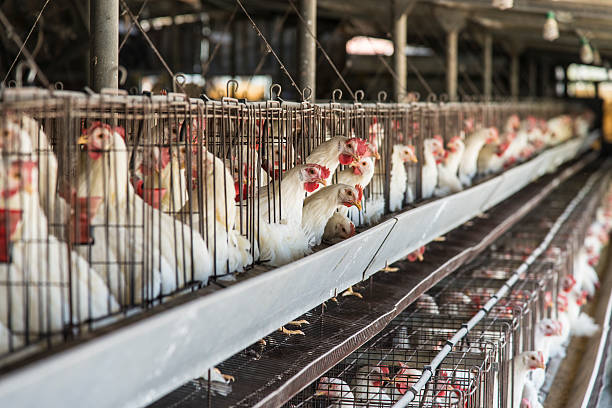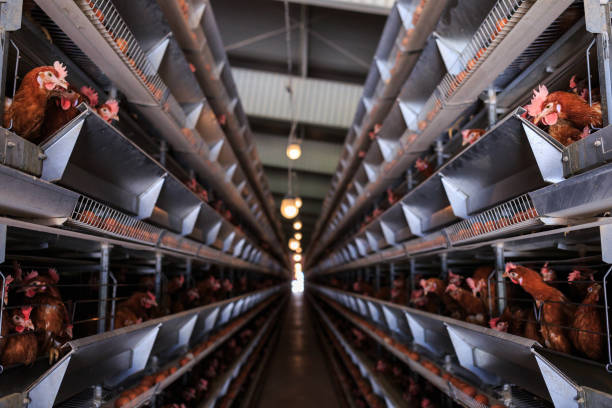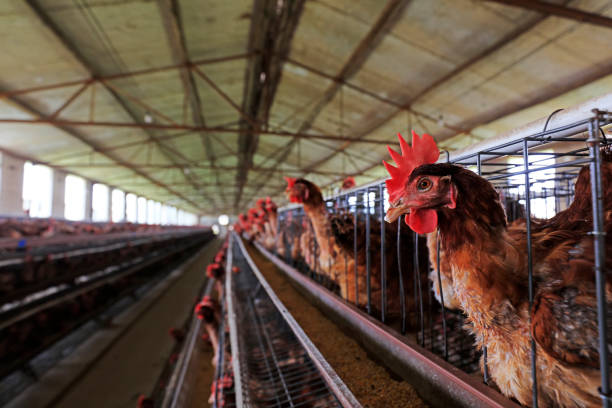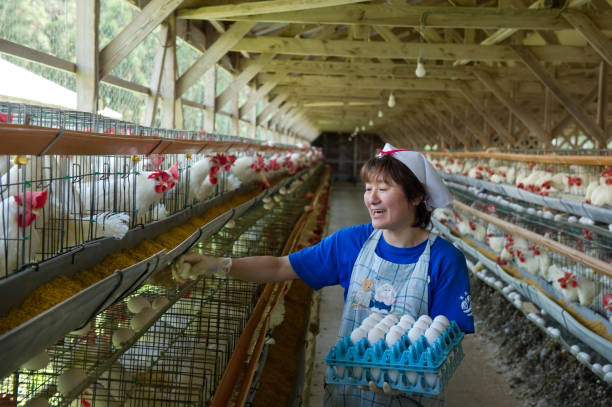
Starting a Successful Layer Farming Business in Pakistan: Key Planning Strategies
Starting a Successful Layer Farming Business in Pakistan: Key Planning Strategies
Pakistan’s poultry industry is a rapidly growing sector, offering substantial opportunities for entrepreneurs, particularly in layer farming. However, success in this field requires more than just enthusiasm; a well-thought-out plan is essential. This article dives into the key planning strategies for starting a successful layer farming business in Pakistan, covering everything from market research to daily operations. Let’s get cracking!
Understanding the Pakistani Poultry Market
Before you even think about buying chicks or building a coop, you need to understand the lay of the land – the Pakistani poultry market. Pakistan is a large consumer of eggs, and the demand is steadily increasing due to population growth and changing dietary habits. This presents a significant opportunity, but also means more competition.
Market Research is Crucial: Conduct thorough market research to understand the demand-supply dynamics in your target region. Identify your potential customers, including local markets, retailers, restaurants, and wholesalers. Determine the price points for eggs in different seasons and understand the factors that influence price fluctuations. Online surveys, interviews with local vendors, and visiting different markets can provide invaluable insights.
Competition Analysis: Who are your competitors? What are their strengths and weaknesses? Identify existing layer farms in your area and assess their market share, pricing strategies, and distribution channels. This information will help you differentiate your business and develop a competitive edge.
Consumer Preferences: What type of eggs are consumers demanding? Are they looking for organic eggs, brown eggs, or eggs of a specific size? Understanding consumer preferences is crucial for producing the right product and targeting the right market segment.
Creating a Robust Business Plan
A comprehensive business plan serves as a roadmap for your layer farming venture. It outlines your goals, strategies, and financial projections, providing a clear path to success. Here’s what your business plan should include:
Executive Summary: This is a brief overview of your business, highlighting your mission, goals, and key strategies. It should be concise and engaging, capturing the attention of potential investors and stakeholders.
Company Description: Provide a detailed description of your layer farming business, including your legal structure, ownership, and management team. Explain your business model and how you plan to generate revenue.
Market Analysis: This section elaborates on your market research findings, including the demand-supply dynamics, competition analysis, and consumer preferences. It demonstrates your understanding of the market and justifies your business venture.
Products and Services: Describe the types of eggs you plan to produce, including their size, color, and quality. Outline any additional services you may offer, such as egg delivery or processing.
Marketing and Sales Strategy: How will you reach your target customers? Develop a marketing plan that includes branding, advertising, and promotional activities. Outline your sales strategy, including pricing, distribution channels, and customer service.
Operations Plan: This section details the day-to-day operations of your layer farm, including the location, housing, feeding, and healthcare of your chickens. It also includes your biosecurity measures to prevent disease outbreaks.
Management Team: Introduce your management team and highlight their experience and expertise. A strong management team is crucial for the success of any business.
Financial Projections: Develop realistic financial projections, including startup costs, operating expenses, revenue forecasts, and profitability analysis. This section is crucial for securing funding from investors or lenders. It should include a break-even analysis to determine the point at which your business will become profitable.

Funding Request: If you are seeking funding, clearly state the amount of funding you require and how you plan to use it. Provide details on your repayment plan and the collateral you are offering.
Choosing the Right Location
Location is paramount for any agricultural enterprise, and layer farming is no exception. The ideal location should offer a balance of accessibility, biosecurity, and affordability.
Accessibility: Choose a location that is easily accessible to markets, suppliers, and transportation networks. This will reduce transportation costs and ensure timely delivery of eggs and feed.
Water Availability: Access to a reliable and clean water source is crucial for the health and productivity of your chickens. Ensure that the location has sufficient groundwater or access to a municipal water supply.
Electricity Supply: A stable electricity supply is essential for lighting, ventilation, and operating equipment. Consider investing in a backup generator to mitigate the risk of power outages.
Biosecurity: Choose a location that is isolated from other poultry farms and residential areas to minimize the risk of disease transmission. The site should be free from potential contaminants and have good drainage.
Land Cost: The cost of land can vary significantly depending on the location. Find a balance between accessibility, biosecurity, and affordability when selecting your site.
Selecting the Right Chicken Breed
The breed of chicken you choose will significantly impact your egg production, feed conversion ratio, and overall profitability. Research different breeds and select the one that best suits your market demands and environmental conditions.
High-Producing Breeds: Popular high-producing layer breeds include the Hy-Line Brown, Lohmann Brown, and ISA Brown. These breeds are known for their excellent egg-laying capacity and adaptability to different environments.
Dual-Purpose Breeds: If you are interested in producing both eggs and meat, consider dual-purpose breeds such as the Rhode Island Red or Plymouth Rock. These breeds lay a decent number of eggs and also provide a good source of meat.
Climate Considerations: Choose a breed that is well-suited to the climate in your region. Some breeds are more tolerant of heat, while others are better adapted to cold temperatures.
Disease Resistance: Select a breed that is known for its disease resistance. This will reduce the risk of disease outbreaks and minimize your healthcare costs.
Designing and Constructing the Layer Farm
The design and construction of your layer farm should prioritize the well-being of your chickens, optimize egg production, and minimize operational costs.
Housing Systems: There are several housing systems available for layer farms, including cage systems, deep litter systems, and free-range systems. Cage systems offer better control over the environment and higher egg production, while deep litter and free-range systems provide more space for the chickens to roam and forage. Consider the trade-offs between cost, egg production, and animal welfare when selecting your housing system.
Ventilation: Proper ventilation is crucial for maintaining a healthy environment for your chickens. Ensure that your layer farm has adequate ventilation to remove ammonia, dust, and excess heat. Natural ventilation can be supplemented with mechanical ventilation systems.
Lighting: Lighting plays a critical role in egg production. Provide adequate lighting to stimulate egg laying. A combination of natural and artificial light is ideal. Use timers to regulate the lighting schedule.
Feeding and Watering Systems: Invest in efficient feeding and watering systems to minimize feed wastage and ensure that your chickens have access to fresh water at all times. Nipple drinkers are a popular choice for layer farms as they reduce water wastage and prevent contamination.
Waste Management: Develop a waste management plan to dispose of manure and other waste products in an environmentally friendly manner. Manure can be composted and used as fertilizer or sold to farmers.
Feeding and Nutrition
Proper feeding and nutrition are essential for maximizing egg production and maintaining the health of your chickens.
Balanced Diet: Provide your chickens with a balanced diet that meets their nutritional requirements. Layer feed should contain adequate levels of protein, energy, vitamins, and minerals.
Feed Quality: Source high-quality feed from reputable suppliers. Avoid using contaminated or spoiled feed.
Feeding Schedule: Establish a consistent feeding schedule and provide your chickens with feed at regular intervals. This will help regulate their metabolism and optimize egg production.
Supplementation: Supplement your chickens’ diet with vitamins and minerals as needed. This is especially important during periods of stress or disease.
Health Management and Biosecurity
Maintaining the health of your chickens is essential for preventing disease outbreaks and maximizing egg production.
Vaccination: Follow a strict vaccination schedule to protect your chickens against common poultry diseases. Consult with a veterinarian to determine the appropriate vaccination program for your region.
Biosecurity Measures: Implement strict biosecurity measures to prevent the introduction and spread of diseases. This includes restricting access to the farm, disinfecting equipment and vehicles, and providing foot dips at entrances.
Regular Monitoring: Regularly monitor your chickens for signs of illness. Early detection and treatment can prevent the spread of disease and minimize losses.
Veterinary Consultation: Establish a relationship with a qualified veterinarian who can provide regular health checks and advice on disease prevention and treatment.
Financial Management

Effective financial management is crucial for the long-term success of your layer farming business.
Record Keeping: Maintain accurate records of all income and expenses. This will help you track your profitability and identify areas for improvement.
Budgeting: Develop a budget to track your income and expenses and ensure that you are staying on track.

Cost Control: Implement cost control measures to minimize expenses and maximize profits. This includes negotiating with suppliers, reducing feed wastage, and improving energy efficiency.
Financial Analysis: Regularly analyze your financial performance to identify trends and opportunities for improvement.
Marketing and Sales
A well-defined marketing and sales strategy is essential for attracting customers and maximizing profits.
Branding: Develop a strong brand identity that differentiates your eggs from the competition. This includes your logo, packaging, and marketing materials.
Pricing Strategy: Determine a pricing strategy that is competitive and profitable. Consider factors such as production costs, market prices, and competitor pricing.
Distribution Channels: Establish reliable distribution channels to reach your target customers. This may include selling directly to consumers, supplying to retailers, or working with wholesalers.
Customer Service: Provide excellent customer service to build relationships and retain customers. Respond promptly to inquiries and address any complaints or concerns.
Conclusion
Starting a successful layer farming business in Pakistan requires careful planning, diligent execution, and a strong understanding of the market. By following these key planning strategies, you can increase your chances of success and contribute to the growth of the poultry industry in Pakistan. Remember to stay informed about the latest industry trends, adapt to changing market conditions, and prioritize the well-being of your chickens. Good luck, and may your layer farm be a “egg-cellent” success!
